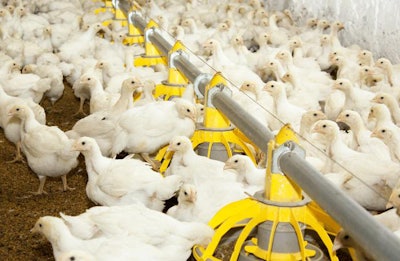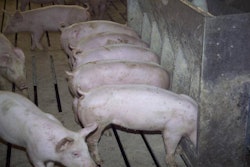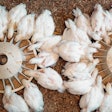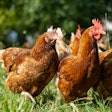
The use of antimicrobial compounds at growth-promoting levels was first banned in Sweden 30 years ago, and it is now reaching global levels with many countries joining. Following the ban, the use of antibiotics for therapeutic purposes increased dramatically, but overall use was markedly reduced. Lamentably, animal productivity was also reduced, and as such alternatives were sought to replace antibiotics. To the dismay of most animal producers, no single product has been identified as able to fully replace banned antibiotics.
It is apparent that today no single technology, feed additive or management practice can promote growth as cost-effectively as most antibiotics, especially in production systems with health status below average. Research and field experience have demonstrated that a synergy of practices is needed to promote growth, at least as effectively as most antibiotics. Feed and (or) production cost, however, are and will remain invariably higher in antibiotic-free programs.
The most common approach in replacing feed-grade antibiotics calls for other additives that mimic the effects of antibiotics. Thus, compounds with bacteriostatic and bacteriocidal activity are added in existing diets to depress microbial load and reduce diversity of microflora at the gastrointestinal level. Such additives include minerals such as zinc oxide and copper sulfate, certain organic acids and several spice/herbal derived compounds. This approach is more appropriate for production systems unable to modify their husbandry practices to reduce dependence on antibiotic-like additives.
A more systematic approach that has been accepted in Europe calls for substantial changes in both production practices and diet formulation.
A more systematic approach that has been accepted in Europe calls for substantial changes in both production practices and diet formulation. In summary, production methods have been modified to minimize exposure of animals to pathogenic microorganisms and improve immune status. In addition, feed formulas have been re-designed to promote proliferation of beneficial bacteria at the gastrointestinal level that compete vigorously for nutrients with pathogenic bacteria. This method, also called “competitive exclusion,” requires a strong understanding of gut microbiology and high standards of production.
Under commercial conditions, elements from both approaches are often combined to achieve desired performance goals at optimal cost. Below is a list of common practices employed in the absence of antibiotics that do not involve, exclude or negate the use of additives.
1. Improved health status. Because antibiotics are most effective in low-health animals, it is expected that improving health by tightening biosecurity, adopting all-in, all-out procedures, enhancing cleaning/disinfecting procedures and stabilizing farm health will reduce dependence on antibiotics. Research and field experience have clearly demonstrated that the effect of antibiotics clearly diminishes under high-health conditions.
2. Increased weaning age (pigs). Increasing weaning age allows piglets to build a robust immune and digestive system that will cope better with post-weaning challenges. This is especially true when piglets are allowed to develop active immunity (past the third week of age) while suckling on the sow. Also, later weaning may offer the advantage of prolonged exposure to creep feed that could further enhance overall condition.
3. In ovo stimulation (broilers). Feeding, vaccinating or challenging developing chicks while in the egg has been shown to increase their overall chances for survival. At the same time, it is possible to create more robust chicks that reach feed and water faster, enabling them to grow rapidly and more efficiently. This is a very on-going field of research that has yet to reach commercial level.
4. Enhanced nutrient digestibility. Unabsorbed nutrients from diets of low digestibility become substrate for bacterial proliferation. A large microbial load not only drains nutrients from the animal (hence the growth-promoting effects of antibiotics), but it also harbors large numbers of potentially pathogenic bacteria such as colibacilli, Salmonella, and clostridia. Nutrient digestibility is of paramount importance during the first week post-weaning (piglets) and during the first week of life (broilers). To this end, using a super pre-starter is a sound investment.
5. Stimulated feed intake. Feed intake plays a critical role in the maintenance of gut health during stress times for young animals. Even a short period of feed deprivation increases gut permeability to antigenic proteins (such as those present in soybean meal) and susceptibility to bacterial. This often leads to diarrhea from hypersensitivity reaction to antigenic proteins in legumes and (or) from endotoxins produced by attached bacteria such as Escherichia coli. In general, the sooner young animals establish a healthy feed intake, the better they can withstand the challenges of the environment in which they are raised.
6. Reduced dietary protein. Bacteria require protein to grow and multiply. By reducing dietary protein and (or) increasing its digestibility, bacterial proliferation and scouring can be markedly reduced. At the same time, it is important to offer a well-balanced profile of digestible amino acids to ensure maximal lean deposition. Dietary protein concentration should not be lowered below 4 percent unless deficiencies in valine and isoleucine are accounted for either by reformulation or use of feed-grade amino acids.
7. Increased dietary fiber. Diets for young animals contain minimal fiber because excess fiber dilutes nutrient energy and impairs digestibility. However, a certain amount of dietary crude fiber (3 to 5 percent) stimulates proliferation of a healthy microflora that can compete with pathogenic bacteria. It also controls feed intake, avoiding overfeeding that leads to reduced digestibility. Thus, many diets without antibiotics are often formulated to contain fiber-rich ingredients such as sugar beet pulp, barley, oats and many other agroindustrial by-prodcuts, but at reduced levels.
Read more: Highly digestible prestarters for antibiotic-free broilers
Comprehensive resource for antibiotic-free poultry production available
A new collection of exclusive articles, blogs, infographics and videos on antibiotic-free poultry production, by trusted WATT Global Media editors and industry experts, equip poultry producers and marketers with information to help them make critical business decisions. Purchase your copy.


















